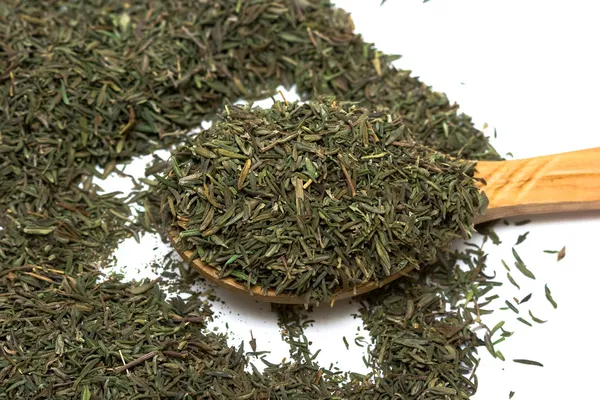Walnut leaves ((Tetracarpidium conophorum Mull. Arg), like many other plant leaves, have been used in traditional medicine for their potential health benefits. In this article, you will find out the health benefits of walnut leaves, how to use it and the potential side effects.
Walnut leaves are compound leaves, meaning they are made up of multiple smaller leaflets. The number of leaflets can range from 5 to 23, depending on the species of the tree. The leaves are typically pinnate, which means they have a feather-like shape. The leaflets are short-stalked and lanceolate in shape, meaning they are long and narrow with pointed tips. The leaves are green in color and have a slightly glossy appearance.
Walnut leaves have known to contain essential properties that help to keep the body safe and healthy.
Now, let’s take a look at the health benefits of walnut leaves, how you can use them, and the risk associated with eating walnut leaves.
7 Health Benefits of Walnut Leaves
Here are some potential health benefits associated with walnut leaves:
1. Antioxidant properties
Walnut leaves contain various bioactive compounds, including phenolic compounds and flavonoids, with antioxidant properties. Antioxidants help neutralize harmful free radicals in the body, reducing oxidative stress and potential cell damage.
Another 2007 study on walnut leaves demonstrated that they contain phenolic compounds which might be responsible for it’s antioxidant activities.
2. Anti-inflammatory effects
Some studies suggest that walnut leaves may possess anti-inflammatory properties. Inflammation is associated with various chronic diseases, such as heart disease, diabetes, and certain types of cancer. The anti-inflammatory potential of walnut leaves may help mitigate inflammation-related health issues.
Furthermore, a 2022 review on medicinal uses, nutritional value, and anti-Inflammatory effects of walnut leaves proved that the leaves contained flavonoids and bioactive compounds that gave it it’s anti-Inflammatory potential.
3. Antimicrobial activities
Walnut leaves have been investigated for their potential antimicrobial properties. Some studies have shown that extracts from walnut leaves exhibit activity against certain bacteria and fungi. This suggests that they may possess antimicrobial properties that could be beneficial for preventing or treating certain infections.
A study conducted in 2013 investigated the potentials of walnut (Tetracarpidium conophorum Mull. Arg) leaf extracts as antimicrobial agents for fish diseases.
According to the findings, the tested organisms showed antibacterial activity in response to extracts from walnut leaves and onion bulbs, demonstrating their potential use in treating fish diseases.
4. Antinociceptive effects
Antinociceptive refers to the process of reducing or blocking the perception of pain by the nervous system in response to a potentially harmful or noxious stimulus.
In a 2012 study, walnut leaves were found to exhibit antinociceptive effects through non-opioid receptors, as well as anti-inflammatory effects against acute and chronic inflammation. As a result, they show promise as potential analgesic and anti-inflammatory agents for the treatment of conditions like rheumatoid arthritis.
5. Potential antidiabetic properties
Walnut leaves have been traditionally used in teas and decoctions to treat diabetic symptoms.
In vivo studies have confirmed the ability of walnut leaves to improve hyperglycemia in humans, but the specific compounds responsible for this effect were unknown.
A 2016 study isolated and identified two compounds from the walnut leaf extract that belong to the megastigmane class and have significant antidiabetic activity.
The study also evaluated the compounds’ potential to affect glucose uptake in cell lines. The findings could lead to a more informed use of walnut leaf-based beverages in the treatment of diabetes.
6. Promotes skin health
Topical application of walnut leaf extract or preparations has been used traditionally for skin health. It is believed to possess astringent properties to help tone and tighten the skin. Additionally, walnut leaves’ antioxidant and anti-inflammatory properties may contribute to maintaining healthy skin.
7. Digestive support
In traditional medicine, walnut leaves have been used for digestive issues. They are believed to have mild laxative properties and may help relieve constipation. However, more research is needed to validate these claims.
Ways to Consume Walnut Leaves
You can consume walnut leaves in three ways, and they are as follows:
- Tea: You can stele dried or fresh walnut leaves in hot water.
- Tincture: You can make a tincture by soaking dried or fresh walnut leaves in alcohol.
- Powder: You can grind dried walnut leaves into a powder and add it to food or beverages.
Associated Risk with Consuming Walnut Leaves
Here are some potential risks associated with consuming walnut leaves, including:
- Diarrhea: Walnut leaves can cause diarrhea, especially if consumed in large amounts.
- Allergic reaction: Some people may be allergic to walnut leaves. Symptoms of an allergic reaction can include hives, swelling, and difficulty breathing.
- Skin irritation: Walnut leaves contain a chemical called juglone, which can irritate the skin. If you come into contact with walnut leaves, washing the affected area with soap and water is essential.
- Liver damage: In rare cases, consuming walnut leaves can lead to liver damage. If you experience liver problems after consuming walnut leaves, it is essential to see a doctor immediately.
However, here are some tips for reducing the risks of consuming walnut leaves:
- Start with small amounts: If you are new to using walnut leaves, start with small amounts and gradually increase your consumption.
- Cook walnut leaves: Cooking walnut leaves can help to reduce the amount of juglone they contain.
- Avoid using walnut leaves if you are pregnant or breastfeeding: There is not enough information on the safety of walnut leaves for pregnant or breastfeeding women.
- Talk to your doctor: If you have health concerns, talk to your doctor before using walnut leaves.
Conclusion
It’s important to note that while walnut leaves show potential health benefits, they should be considered. Suppose you’re considering using walnut leaves for their potential health benefits. In that case, consulting with a healthcare professional or a licenced medical doctor is always a good idea to ensure safe and appropriate usage.
YOU SHOULD ALSO READ:
- 7 Grand Health Benefits of Guava Leaves
- 7 Captivating Health Benefits Of Monkey Kola
- 7 Potential Health Benefits Of Justicia Carnea (Ewe Eje)
- Morinda Lucida (Oruwo Leaves): Health Benefits and Effects
- 6 Health Benefits of Hog Plums (Iyeye Leaves)
- Costus afer (Okpete): Health Benefits and Side Effects
- 7 Health Benefits of Osu Fruit (Hunteria umbellata)
- 11 Health Benefits of Ogirisi Leaves (Newbouldia laevis)
- 8 Specific Health Benefits of Awolowo Leaves (Siam Weed)
- 8 Potential Health Benefits of Pawpaw Leaves
Collins Nwokolo is a human physiologist, writer and health enthusiast. He loves writing helpful articles on health and fitness, which he enjoys sharing with everyone.










